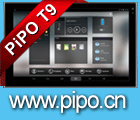Rlink Technology Resource Chain Limited of Hong Kong, presents their electronic products and services. The company, based in Hong Kong, specializes in e-ink displays, catering to various industries such as hospitals and schools. Their innovative e-ink paper offers substantial power savings, with a single battery lasting up to five years.
Ring’s product lineup includes various sizes, with even the smallest one suitable for luggage tags. These e-ink displays can be updated every 3 days or as needed, offering flexibility to users. Their market presence extends beyond Hong Kong, with worldwide distribution.
They also offer transparent LCD displays, ideal for applications like display boxes. Ring Technology has been in the business for 20 years, originally focusing on mobile phone accessories and memory products.
The interview also touches upon AI cameras with zoom capabilities, adaptable to the number of people present. They discuss AI’s ability to adjust the focus on the speaker and other advanced features. The company extends its product range to include phone holders for cars and smart appliances.
Ring Technology introduces its P brand, specializing in various consumer products, including a coffee cup and shaver. They also mention their involvement in augmented reality (AR) and virtual reality (VR) applications for education and training, connecting real-world experiences with virtual spaces.
The transparent displays create a virtual space within glass and offer opportunities for remote technical training and education. These products are already available for sale, catering to smart factories and educational organizations.
The interview also briefly touches upon their pricing strategy, mentioning that the transparent displays may cost around $10 to $20, depending on the size and design. The company encourages potential customers to inquire about specific pricing based on their needs.
They discuss the NFC technology and how customized orders are available for different sizes and designs. The interview concludes with a discussion about a 4K webcam, though no explicit claims are made about its superiority compared to Logitech products.
Ring Technology’s products cater to a wide range of applications and industries, with contact information provided for viewers interested in exploring their offerings further.
Filmed at the HKTDC Hong Kong Electronics Fair using my Panasonic G9 (I would like to update to the G9ii) with 12-60mm Leica https://amzn.to/3ZXlPDQ and the Saramonic Blink500 ProX B2R https://www.youtube.com/playlist?list=PL7xXqJFxvYvi1DeQspd43hydxLddBjU8Z text by chatgpt



